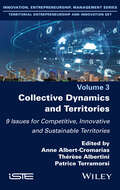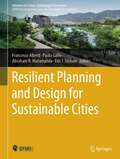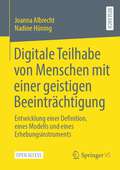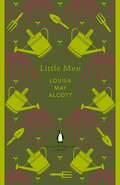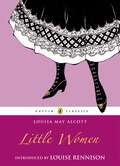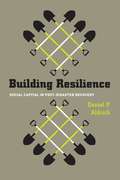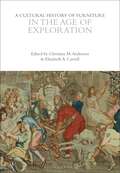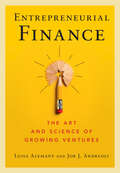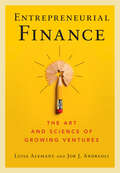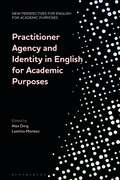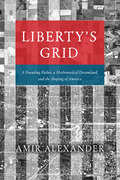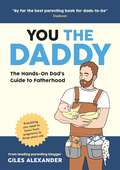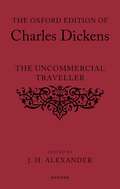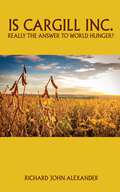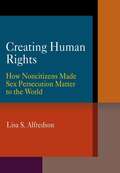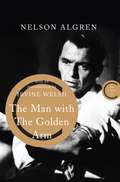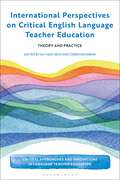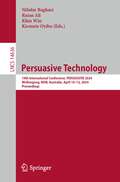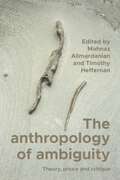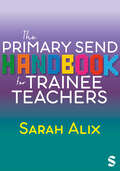- Table View
- List View
Collective Dynamics and Territories: 9 Issues for Competitive, Innovative and Sustainable Territories
by Anne Albert-Cromarias Therese Albertini Patrice TerramorsiFaced with global economic, social and environmental challenges requiring us to go beyond individual actions, the development of collective dynamics is the ideal response. From this perspective, territories, which have long been neglected, are now asserting themselves as breeding grounds for innovative and relevant forms of organized action in response to shared experiences. Bringing together more than twenty researchers in strategic management, human resources management and marketing, Collective Dynamics and Territories offers, through nine territorial issues (innovating and regenerating territories, building environmental action, attracting and retaining talent, etc.), insights into the conditions and modalities for developing collective dynamics within territories. The success of local collective dynamics depends on support for the actors involved, from situation analysis to problem definition, including idea generation, selection, implementation and evaluation. This book offers a comprehensive, systemic and operational vision for analyzing and acting on collective territorial dynamics.
Resilient Planning and Design for Sustainable Cities (Advances in Science, Technology & Innovation)
by Francesco Alberti Paola Gallo Abraham R. Matamanda Eric J. StraussThis book discusses a crucial paradigm shift in urban planning and architectural design, addressing the urgent need for sustainability and adaptation in the face of rapidly changing climate and urban landscapes. Ideal for urban planners, architects, researchers, and policymakers, this book weaves together cutting-edge research and innovative applications from the 7th edition of the international conference on Urban Planning and Architectural Design for Sustainable Development organized by IEREK in collaboration with the Architecture Department at the University of Florence, Italy. Through a collection of double-blind peer-reviewed papers, it offers a cohesive narrative emphasizing the vital role of spatial design at all scales. Readers will explore diverse case studies, from bustling megacities to forgotten villages, showcasing the local impacts of global challenges and the efforts to prevent, neutralize or mitigate them. With an insightful blend of qualitative and quantitative methods, the book uncovers the multi-functionality of blue-green infrastructure, the potentials of urban voids, and the urgent need for ecological transition. Unveiling the gap between current governance instruments and pressing challenges, this book serves as a compass for crafting inclusive, livable, and environmentally conscious cities and communities.
Digitale Teilhabe von Menschen mit einer geistigen Beeinträchtigung: Entwicklung einer Definition, eines Modells und eines Erhebungsinstruments
by Joanna Albrecht Nadine HüningIn diesem Open-Access-Buch wird die Entwicklung einer Definition, eines Modells und eines Erhebungsinstruments Digitaler Teilhabe von Menschen mit geistiger Beeinträchtigung beschrieben. Eine geistige Behinderung wird als Konstrukt verstanden, das durch die ganzheitliche Wechselwirkung zwischen personenbezogenen Faktoren, Gesundheitsproblemen sowie umweltbezogenen Barrieren entsteht. Für die Identifikation der Hilfebedarfe zur Realisierung von Teilhabe ist die ganzheitliche Betrachtung von heterogenen Ursachen, Formen und Ausprägungen unverzichtbar. Der Anspruch auf Teilhabe ist gesetzlich verankert, jedoch führt die digitale Transformation zu neuen gesellschaftlichen Ungleichheiten, die sich als Digital Divide manifestieren. Trotz geringer und heterogener Datenlage zu Ungleichheiten bei Menschen mit (geistiger) Beeinträchtigung sind bereits Hinweise auf eine Digital Disability Divide zu erkennen. Um dieses Forschungsdesiderat aufzuarbeiten, bedarf es eines einheitlichen Begriffsverständnisses Digitaler Teilhabe. Auch müssen Einflussfaktoren eruiert werden, um Ansätze zur Förderung Digitaler Teilhabe zu entwickeln und darauf aufbauend ein Erhebungsinstrument zu entwickeln. Entsprechend verfolgt diese Forschungsarbeit die Entwicklung einer Definition,eines Modells und Erhebungsinstruments Digitaler Teilhabe von Menschen mit geistiger Beeinträchtigung in der Eingliederungshilfe.
Little Men (The Penguin English Library)
by Louisa May Alcott'The small hopes and plans and pleasures of children should be tenderly respected by grown-up people, and never rudely thwarted or ridiculed'Continuing the adventures of the March sisters from Little Women, Little Men follows the story of spirited, determined Jo, now married with two sons, and running a school. But this is no conventional school. Its pupils are a band of boisterous orphans, pillow fights are allowed on Saturdays, and each child is respected for who they are – including Nat, a skinny, nervous boy with a talent for the violin.Showing how families can take many forms, Louisa M. Alcott’s beloved novel is a celebration of the magic of childhood.
Little Women: Or, Meg, Jo, Beth And Amy (Puffin Classics)
by Louisa May AlcottLittle Women by Louisa May Alcott is a classic novel loved by adults and children alike.Come laugh and cry with the March family.Meg - the sweet-tempered one. Jo - the smart one. Beth - the shy one. Amy - the sassy one.Together they're the March sisters. Their father is away at war and times are difficult, but the bond between the sisters is strong. The family may not have much money, but that doesn't stop them from creating their own fun and forming a secret society. Through sisterly squabbles, happy times and sad, their four lives follow very different paths, and they discover that growing up is sometimes very hard to do...***PLUS a behind-the-scenes journey, including an author profile, a guide to who's who, activities and more...***Louisa May Alcott wrote her first novel, The Inheritance, at age seventeen, but it went unpublished for nearly 150 years until 1997, after two researchers (Joel Myerson and Daniel Shealy) stumbled across the handwritten manuscript in the Houghton Library at Harvard University. Of course, Ms. Alcott is best known for a different novel, Little Women, which she wrote in two parts. The first volume, alternately titled Meg, Jo, Beth, and Amy, was published in 1868, and the second volume, Good Wives, was published in 1869. Like Jo in Little Women, Louisa also wrote many "blood and thunder" tales, which were published in popular periodicals of the day. She did not openly claim authorship for many of these Gothic thriller stories, however: for some, she used the pseudonym, "A. M. Barnard"; for others, she chose to remain completely anonymous.
Building Resilience: Social Capital in Post-Disaster Recovery
by Daniel P. AldrichEach year, natural disasters threaten the strength and stability of communities worldwide. Yet responses to the challenges of recovery vary greatly and in ways that aren’t explained by the magnitude of the catastrophe or the amount of aid provided by national governments or the international community. The difference between resilience and disrepair, as Daniel P. Aldrich shows, lies in the depth of communities’ social capital. Building Resilience highlights the critical role of social capital in the ability of a community to withstand disaster and rebuild both the infrastructure and the ties that are at the foundation of any community. Aldrich examines the post-disaster responses of four distinct communities—Tokyo following the 1923 earthquake, Kobe after the 1995 earthquake, Tamil Nadu after the 2004 Indian Ocean Tsunami, and New Orleans post-Katrina—and finds that those with robust social networks were better able to coordinate recovery. In addition to quickly disseminating information and financial and physical assistance, communities with an abundance of social capital were able to minimize the migration of people and valuable resources out of the area. With governments increasingly overstretched and natural disasters likely to increase in frequency and intensity, a thorough understanding of what contributes to efficient reconstruction is more important than ever. Building Resilience underscores a critical component of an effective response.
A Cultural History of Furniture in the Age of Exploration (The Cultural Histories Series)
by Professor Megan AldrichThe 16th and 17th centuries in Europe witnessed a significant paradigm shift. Rooted in medieval beliefs and preoccupations, the exploration so characteristic of the period stemmed from religious motives but came to be propelled by commerce and curiosity as Europeans increasingly engaged with the rest of the world. Interiors in both public and private spaces changed to reflect these cultural encounters and, with them, the furniture with which they were populated. Visually, furniture of this period displayed new designs, forms and materials. In its uses, it also mirrored developments in science, technology, government and social relationships as prints became more widely distributed, the Wunderkammer developed and there was religious strife and resistance to absolute monarchical rule.Drawing upon a wealth of visual and textual sources, this volume presents essays that examine key characteristics of the furniture of the period on the themes of Design and Motifs; Makers, Making, and Materials; Types and Uses; The Domestic Setting; The Public Setting; Exhibition and Display; Furniture and Architecture; Visual Representations; and Verbal Representations.
A Cultural History of Furniture in the Age of Exploration (The Cultural Histories Series)
by Professor Megan AldrichThe 16th and 17th centuries in Europe witnessed a significant paradigm shift. Rooted in medieval beliefs and preoccupations, the exploration so characteristic of the period stemmed from religious motives but came to be propelled by commerce and curiosity as Europeans increasingly engaged with the rest of the world. Interiors in both public and private spaces changed to reflect these cultural encounters and, with them, the furniture with which they were populated. Visually, furniture of this period displayed new designs, forms and materials. In its uses, it also mirrored developments in science, technology, government and social relationships as prints became more widely distributed, the Wunderkammer developed and there was religious strife and resistance to absolute monarchical rule.Drawing upon a wealth of visual and textual sources, this volume presents essays that examine key characteristics of the furniture of the period on the themes of Design and Motifs; Makers, Making, and Materials; Types and Uses; The Domestic Setting; The Public Setting; Exhibition and Display; Furniture and Architecture; Visual Representations; and Verbal Representations.
Entrepreneurial Finance: The Art and Science of Growing Ventures
by Luisa Alemany Job J. AndreoliAcademics and practitioners from a range of institutions across Europe provide a cutting-edge, practical, and comprehensive review on the financing of entrepreneurial ventures. From sourcing and obtaining funds, to financial tools for growing and managing the financial challenges and opportunities of the startup, Entrepreneurial Finance: The Art and Science of Growing Ventures is an engaging text that will equip entrepreneurs, students and early-stage investors to make sound financial decisions at every stage of a business' life. Largely reflecting European businesses and with a European perspective, the text is grounded in sound theoretical foundations. Case studies and success stories, as well as perspectives from the media and from experts, provide real-world applications, while a wealth of activities give students abundant opportunities to apply what they have learned. A must-have text for both graduate and undergraduate students in entrepreneurship, finance and management programs, as well as aspiring entrepreneurs in any field.
Entrepreneurial Finance: The Art and Science of Growing Ventures
by Luisa Alemany Job J. AndreoliAcademics and practitioners from a range of institutions across Europe provide a cutting-edge, practical, and comprehensive review on the financing of entrepreneurial ventures. From sourcing and obtaining funds, to financial tools for growing and managing the financial challenges and opportunities of the startup, Entrepreneurial Finance: The Art and Science of Growing Ventures is an engaging text that will equip entrepreneurs, students and early-stage investors to make sound financial decisions at every stage of a business' life. Largely reflecting European businesses and with a European perspective, the text is grounded in sound theoretical foundations. Case studies and success stories, as well as perspectives from the media and from experts, provide real-world applications, while a wealth of activities give students abundant opportunities to apply what they have learned. A must-have text for both graduate and undergraduate students in entrepreneurship, finance and management programs, as well as aspiring entrepreneurs in any field.
Practitioner Agency and Identity in English for Academic Purposes (New Perspectives for English for Academic Purposes)
by Alex Ding and Laetitia MonbecThis volume provides insights into EAP practitioners' identity and agency in varied contexts and field positions. Each chapter delves into a theoretical perspective (Bourdieu's field theory, Post-humanism, Legitimation Code Theory, Symbolic Interactionism..), and a variety of methodologies, enabling different questions to be explored. Each chapter is also a window into the everyday life of practitioners as they navigate their professional lives, and the specificities of their EAP contexts, the politics and struggles over power, domination, legitimacy, status, ambition and recognition. The authors' concerns and strategies vary and show that the weight of powerful structures and collective habitus is difficult - but not impossible- to resist. From a socio-analysis of EAP and its narratives of origins, to a discussion on Ethics in EAP and a critique of the Global South label, the reader will explore contributions from Canada, Hong Kong, Malaysia, Pakistan, Singapore, South Africa, the UK, and Zimbabwe.The chapters reveal a field which is made up of a constellation of worlds, each with its own logic but importantly, a field with no centre. The studies in the chapters are likely to intrigue, inspire, but also disrupt some readers' expectations and challenge their assumptions about the field and its practitioners.
Liberty's Grid: A Founding Father, a Mathematical Dreamland, and the Shaping of America
by Amir AlexanderThe surprising history behind a ubiquitous facet of the United States: the gridded landscape. Seen from an airplane, much of the United States appears to be a gridded land of startling uniformity. Perpendicular streets and rectangular fields, all precisely measured and perfectly aligned, turn both urban and rural America into a checkerboard landscape that stretches from horizon to horizon. In evidence throughout the country, but especially the West, the pattern is a hallmark of American life. One might consider it an administrative convenience—an easy way to divide land and lay down streets—but it is not. The colossal grid carved into the North American continent, argues historian and writer Amir Alexander, is a plan redolent with philosophical and political meaning. In 1784 Thomas Jefferson presented Congress with an audacious scheme to reshape the territory of the young United States. All western lands, he proposed, would be inscribed with a single rectilinear grid, transforming the natural landscape into a mathematical one. Following Isaac Newton and John Locke, he viewed mathematical space as a blank slate on which anything is possible and where new Americans, acting freely, could find liberty. And if the real America, with its diverse landscapes and rich human history, did not match his vision, then it must be made to match it. From the halls of Congress to the open prairies, and from the fight against George III to the Trail of Tears, Liberty’s Grid tells the story of the battle between grid makers and their opponents. When Congress endorsed Jefferson’s plan, it set off a struggle over American space that has not subsided. Transcendentalists, urban reformers, and conservationists saw the grid not as a place of possibility but as an artificial imposition that crushed the human spirit. Today, the ideas Jefferson associated with the grid still echo through political rhetoric about the country’s founding, and competing visions for the nation are visible from Manhattan avenues and Kansan pastures to Yosemite’s cliffs and suburbia’s cul-de-sacs. An engrossing read, Liberty’s Grid offers a powerful look at the ideological conflict written on the landscape.
Liberty's Grid: A Founding Father, a Mathematical Dreamland, and the Shaping of America
by Amir AlexanderThe surprising history behind a ubiquitous facet of the United States: the gridded landscape. Seen from an airplane, much of the United States appears to be a gridded land of startling uniformity. Perpendicular streets and rectangular fields, all precisely measured and perfectly aligned, turn both urban and rural America into a checkerboard landscape that stretches from horizon to horizon. In evidence throughout the country, but especially the West, the pattern is a hallmark of American life. One might consider it an administrative convenience—an easy way to divide land and lay down streets—but it is not. The colossal grid carved into the North American continent, argues historian and writer Amir Alexander, is a plan redolent with philosophical and political meaning. In 1784 Thomas Jefferson presented Congress with an audacious scheme to reshape the territory of the young United States. All western lands, he proposed, would be inscribed with a single rectilinear grid, transforming the natural landscape into a mathematical one. Following Isaac Newton and John Locke, he viewed mathematical space as a blank slate on which anything is possible and where new Americans, acting freely, could find liberty. And if the real America, with its diverse landscapes and rich human history, did not match his vision, then it must be made to match it. From the halls of Congress to the open prairies, and from the fight against George III to the Trail of Tears, Liberty’s Grid tells the story of the battle between grid makers and their opponents. When Congress endorsed Jefferson’s plan, it set off a struggle over American space that has not subsided. Transcendentalists, urban reformers, and conservationists saw the grid not as a place of possibility but as an artificial imposition that crushed the human spirit. Today, the ideas Jefferson associated with the grid still echo through political rhetoric about the country’s founding, and competing visions for the nation are visible from Manhattan avenues and Kansan pastures to Yosemite’s cliffs and suburbia’s cul-de-sacs. An engrossing read, Liberty’s Grid offers a powerful look at the ideological conflict written on the landscape.
You the Daddy: The Hands-On Dad’s Guide to Pregnancy, Birth and the Early Years of Fatherhood
by Giles AlexanderA modern-day parenting guide for dads-to-be, packed with insider tips, practical advice and honest accounts of dad lifeSplit into digestible chapters for readers who are short on time and need a helping hand, this book covers all the stages of pregnancy, birth and the early years of parenthood, up until your baby's three.
The Oxford Edition of Charles Dickens: The Uncommercial Traveller (The Oxford Edition of Charles Dickens)
by J. H. AlexanderThe Uncommercial Traveller is a remarkable display of creative journalism from Dickens's final decade, balancing Sketches by Boz at the beginning of his career. The 37 short papers, which first appeared in his weekly journal All The Year Round, offer sensitive and penetrating perspectives on London, Britain, and France in the 1860s. In the company of the Traveller, readers undertake a series of journeys. We visit the scene of a disastrous shipwreck on Anglesey, the docklands at Liverpool, and the Chatham dockyard. We accompany the Traveller as he returns to the scene of his early childhood in 'Dullborough'. We cross the Channel in atrocious conditions, and we explore 'the French-Flemish country'. Twice, we join the local crowds for the gruesome entertainment offered by the Paris morgue. Nearer to Dickens's Covent Garden base we attend a popular theatre for a performance and a Sunday sermon. We visit a children's hospital, a lead factory, and a naval school. We tramp the city by night. We have repeated problems with restaurants. We hear weird stories, meet odd characters, and much more. Full of humour, sentiment, quirkiness; supremely assured in their command of style; astonishingly varied: these papers take a worthy place alongside the Dickens's late fictional masterpieces Great Expectations and Our Mutual Friend. This is the first fully critical edition of The Uncommercial Traveller, based on detailed study of the surviving densely worked manuscripts and the early printed texts. The edition includes a full analytical essay, textual notes, and detailed explanatory notes, as well as a glossary of unusual terms and words used in senses likely to be unfamiliar to modern readers.
Is Cargill Inc. really the answer to world hunger?
by Richard John AlexanderThe book looks at the history and contemporary position of Cargill Inc. and relates how it has become the largest transnational agri-commodity trader in the world over the years. It surveys some of the agricultural-food products Cargill trades in, including soya, cocoa, palm oil, meat and dairy products. In particular the book analytically examines, whether the company engages in environmentally or ecologically good practice. The discussion of Cargill's producing and trading food globally is framed within a set of ecocritical principles. The book focuses on what Cargill says they do and it investigates the manner in which they say they are doing things. It discusses how the company, Cargill, is keen to present itself as a sustainable corporation. The story it presents to the world maintains that it protects animal welfare, the environment and people, among other things, in all its operations. The language it employs on its corporate websites is subjected to close analysis. The book describes how from an ecological and economic perspective Cargill has enveloped the global food production system with its network of offices and facilities. Along the way, its various activities are held to have contributed immensely to the ecological and environmental degradation of the physical world. Industrial agriculture and the food industry are seen by some observers almost as big a driver of climate change as fossil fuels.
Biotechnological Processes for Green Energy, and High Value Bioproducts by Microalgae, and Cyanobacteria Cultures (Developments in Applied Phycology #13)
by Alfredo de Jesús Martínez-RoldánMicroalgae and cyanobacteria are a very diverse group of photosynthetic microorganisms with many applications. Some of them are related to the accumulation of molecules involved in specific metabolic pathways such as pigments, fatty acids, polyunsaturated fatty acids, carbohydrates, amino acids, etc. Also, there are uses of the biomass related to the exploitation of physiological necessities such as the absorption of essential nutrients (the removal of nitrogen and phosphorus from wastewater, the capture of CO2 from the fixation of nitrogen, etc.). Nevertheless, the evaluation in financial and life-cycle aspects is necessary to ensure the industrial application of the processes. The objective of the book is to analyze innovative applications of microalgae and cyanobacteria to develop environmental-friendly processes for removal of pollutants, wastewater treatment, production of high-value products or bioenergy, and finally evaluate the feasibility of the processes both ineconomic and sustainability aspects.
Creating Human Rights: How Noncitizens Made Sex Persecution Matter To The World (pdf) (Pennsylvania Studies In Human Rights Ser.)
by Lisa S. AlfredsonSelected by Choice magazine as an Outstanding Academic Title Creating Human Rights offers the first systematic study of a pioneering women's refugee movement and its challenge, as an international trigger case, to more conventional paths toward human rights policy development. Lisa S. Alfredson argues that such cases, which unfold in the context of a specific country and have profound impacts on international human rights efforts, have been neglected in research and pose a challenge to recent theorizing on human rights change. In the early 1990s, Canada witnessed the emergence of the world's first comprehensive refugee policy for women who were seeking protection from female-specific forms of violence—rape, domestic abuse, public stoning of adulterers, genital mutilation—while challenging a gender-biased system. Close examination of this novel movement, Alfredson contends, provides crucial insights into why and how states may articulate new human rights that set international precedents. Analyzing original empirical data and sociopolitical historical trends, the book documents the decisive global impacts of the movement while shedding light on the paradox of noncitizen politics and asylum seekers' little recognized political strength. Contrary to expectation, findings suggest transnational networks and pressures are not required for some forms of change. Rather, international trigger cases illuminate a range of other key actors and advocacy strategies leading, subsequently, to a more comprehensive understanding of human rights acceptance. In the case of the women's refugee movement, the convergence of human rights and noncitizen politics points toward a new dimension for human rights scholarship that, in the current age of globalization, is becoming critically important.
The Man With the Golden Arm: 50th Anniversary Critical Edition (Canons #21)
by Nelson AlgrenFrankie Machine, a veteran of the Second World War, returns to Chicago's Northwest side with a morphine habit. Nicknamed the 'kid with the golden arm', Frankie is an aspiring drummer by day and an illicit card-dealer by night. In Molly, an old flame, he sees the chance for redemption, for hard work and success - but the demons that chase Frankie are not quite ready to let go. Nelson Algren's critically acclaimed and enormously powerful novel probes the lives of the displaced and dispossessed of post-war America.
International Perspectives on Critical English Language Teacher Education: Theory and Practice (Critical Approaches and Innovations in Language Teacher Education)
by Ali Fuad Selvi and Ceren KocamanThis book showcases how teacher educators from diverse backgrounds, contexts, and realities approach English language teacher education with a critical stance. Organized into nine parts that explore different facets of English Language Teaching, each section opens with theoretical considerations chapters and features 24 practical application chapters.Written by renowned scholars including Graham Hall, Lili Cavalheiro, and Mario López Gopar, among others, the theoretical considerations chapters offer concise insights into current issues and controversies in the field, point out opportunities for criticality, and discuss implications for teacher education.Written by critically-oriented teacher educators/researchers from various parts of the world including Brazil, Germany, Morocco, Sweden, Turkey, and the USA, among others, the practical application chapters exhibit various ways to incorporate critical approaches in reshaping current teacher education practices (ranging from critical and queer pedagogy to translanguaging to multilingualism) along with a critical reflection of the potentials and the challenges involved in their application.
Persuasive Technology: 19th International Conference, PERSUASIVE 2024, Wollongong, NSW, Australia, April 10–12, 2024, Proceedings (Lecture Notes in Computer Science #14636)
by Raian Ali Nilufar Baghaei Kiemute Oyibo Khin WinThis book constitutes the refereed post-conference proceedings the 19th International Conference on Persuasive Technology, PERSUASIVE 2024 held in Wollongong, NSW, Australia, during April 10–12, 2024. The 14 revised full papers and 8 short papers presented in this book were carefully reviewed and selected from 51 submissions. based on their content: methods for tailoring and personalization; persuasive design and applications, persuasive strategies; and persuasive technologies and ethics.
The anthropology of ambiguity
by Mahnaz Alimardanian Timothy HeffernanThis volume puts ambiguity and its generative power at the centre of analytical attention. Rather than being cast negatively as a source of confusion, bewilderment or as a dangerous portent, ambiguity is held as the source of the dynamic between knowledge and experience and of certainty amid uncertainty. It positions human life between the realms of mystery and mastery where ambiguity is understood as the experience and expression of life and part of navigating the human condition. In turn, the tension between the tradition in anthropology of examining cultural certitudes through ethnographic description and efforts to challenge dominant expressions of incertitude are explored. Each chapter presents ethnographic accounts of how people engage individually and collectively with the self, the other, human-made institutions and the more-than-human to navigate ambiguity in a world affected by viral contagion, climate change, economic instability, labour precarity and (geo)political tension.
The Primary SEND Handbook for Trainee Teachers
by Sarah AlixAll teachers require a clear understanding of the needs of their pupils and how best to support them in the classroom. This book is written to support and guide trainee teachers to understand Special Educational Needs and Disabilities in Primary settings, and how to teach and engage their class in an inclusive way. Packed with all the essential information you need, this book covers the role and responsibilities of the teacher, working with support staff and strategies for the classroom. This essential textbook covers up-to-date policy and legislation, in addition to the four broad key areas of need. Directly linked to the areas of the Core Content Framework, the Early Career Framework and the Teacher’s Standards, this book is written with the goal of helping you to be the best teacher you can.
The Primary SEND Handbook for Trainee Teachers
by Sarah AlixAll teachers require a clear understanding of the needs of their pupils and how best to support them in the classroom. This book is written to support and guide trainee teachers to understand Special Educational Needs and Disabilities in Primary settings, and how to teach and engage their class in an inclusive way. Packed with all the essential information you need, this book covers the role and responsibilities of the teacher, working with support staff and strategies for the classroom. This essential textbook covers up-to-date policy and legislation, in addition to the four broad key areas of need. Directly linked to the areas of the Core Content Framework, the Early Career Framework and the Teacher’s Standards, this book is written with the goal of helping you to be the best teacher you can.
The Primary SEND Handbook for Trainee Teachers
by Sarah AlixAll teachers require a clear understanding of the needs of their pupils and how best to support them in the classroom. This book is written to support and guide trainee teachers to understand Special Educational Needs and Disabilities in Primary settings, and how to teach and engage their class in an inclusive way. Packed with all the essential information you need, this book covers the role and responsibilities of the teacher, working with support staff and strategies for the classroom. This essential textbook covers up-to-date policy and legislation, in addition to the four broad key areas of need. Directly linked to the areas of the Core Content Framework, the Early Career Framework and the Teacher’s Standards, this book is written with the goal of helping you to be the best teacher you can.
